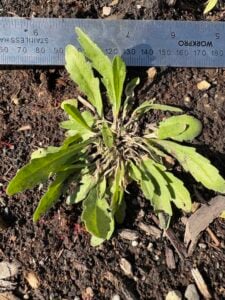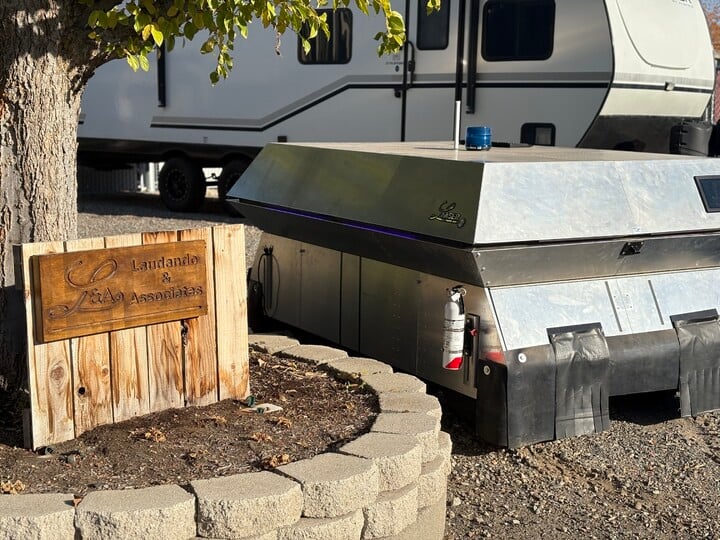Key Takeaways
- Bootstrapped innovation: Laudando & Associates (L&A) is challenging the venture-backed status quo by self-funding AgTech development and empowering farming entrepreneurs through its Catalyzer program.
- Hardware with impact: L&A’s L&Aser™️ module offers a modular, efficient approach to weed control, serving as a serious alternative to chemical applications.
- Tensions with incumbents: Laudando sees resistance from large Ag players, stating a “cooperation embargo” to protect entrenched interests.
- Founder's journey: After losing equity in past ventures, Laudando founded L&A to retain control and support like-minded innovators.
- Vision for 2030: Laudando envisions a future where farmers own their AI tools, shaping regenerative and locally tuned agriculture.
Disruption from the Dirt: Chris Laudando on Redefining AgTech Innovation
In a space often dominated by venture capital and entrenched incumbents, Chris Laudando, Founder and President of Laudando & Associates (L&A), is pursuing a different path: bootstrapping, radical transparency, and farmer-first hardware innovation.
“I didn’t get a piece of several past ventures I co-founded. That stings—but it’s a fantastic motivator,” said Laudando. “L&A is about reclaiming that control.”
Founded in California, L&A spans four core pillars: contract engineering services, internal R&D, a perception-tech product line, and the Catalyzer program, which supports farming entrepreneurs with limited capital. Through discounted development and phantom equity structures, L&A helps turn grassroots ideas into viable, IP-backed ventures.
“We’re aiming to make technology that’s feasible, viable, and directly usable by the people growing our food,” said Laudando.
Engineering for Outcomes, Not Optics
Laudando’s background in food processing equipment and automation gave him a direct view into the labor-heavy bottlenecks in agriculture. What started with Robodando, his first automation company, led to foundational engineering work behind now leading AgTech ventures.
“The AgTech world is still controlled by a triopoly,” he said. “In many cases, this control emphasizes continuity over progress—introducing tools that address surface-level issues while sometimes introducing new complications instead of resolving fundamental challenges.”
This dynamic is reflected in the recent wave of AgTech startups—such as FarmWise and Advanced Farm—that, after early innovation, were ultimately acquired by established players (Often their investors). These transitions often mirror a broader trend in the industry: promising technologies, initially developed independently, are eventually folded into larger corporate structures where innovation may be deprioritized in favor of integration.
Laudando points to this pattern as one of the motivations behind L&A’s approach. By maintaining full ownership and rejecting traditional venture pathways, he aims to protect long-term product vision and avoid the dilution of purpose that can occur post-acquisition.
From Perception to Precision: The Power of L&Aser™️

Among the company’s flagship technologies is the L&Aser™️ module, a proprietary weed control system that uses multimodal light stress to stunt and eliminate weeds with speed and precision. Unlike traditional CO₂ lasers, L&Aser™️ requires far less energy and dwell time, improving throughput and reducing costs.
“We’re talking about an order of magnitude difference in time per weed. That translates directly to scale and viability,” said Laudando.
Built for modularity, L&Aser™️ can be mounted on a range of platforms and tailored to farm-specific conditions. It’s a sharp contrast to monolithic, high-cost systems currently in the market.
“Our design focuses on modularity and compatibility with a range of platforms,” Laudando noted. “This helps address the varied needs of growers—from small specialty farms to larger operations.”
Laudando: Up Against the Status Quo
Laudando doesn’t shy away from naming structural barriers in the industry. He mentions that major OEMs and agrochemical companies work actively to prevent independent technologies like L&Aser™️ from gaining ground.
“We’ve had growers tell us they were ready to go—only to pull out over newly imposed insurance demands or legal threats,” he said. “It’s not about performance. It’s about gatekeeping.”
Despite this, L&A has quietly amassed a $16 million global sales pipeline, with interest from over 20 countries—all without paid sales or marketing.
IP, Access, and the Case for Open Tools
While L&A’s technologies are patent-protected, Laudando doesn’t rule out open-sourcing some elements in the future to empower local manufacturing and decentralize innovation.
“The incumbents think they’re clever picking up distressed IP for pennies,” he said. “But if I open-source this, and someone from Hartnell College builds their own laser rig and services local farms—that’s a bigger disruption than they’re prepared for.”
Chris Laudando's Vision for 2030: AI in the Hands of Farmers
Looking forward, Chris Laudando sees L&A as part of a farmer-led movement—one where localized AI, built and refined by growers, becomes part of the land’s value.
“The real value in future farmland may not just be the soil—it’s the AI trained on it. Farmers will own that, not the cloud.”
Rather than global, generalized models, L&A is developing tools that allow growers to build custom, crop-specific perception systems, from weed recognition to phenotyping.
“We’re giving farmers the means to train their own systems. That’s the only way we make tech truly farmer-first.”


